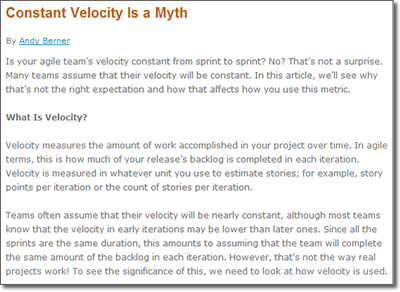In our recent webinar, Function Point Analysis Over the Years, presented by Don Beckett, we received some great questions from our audience. Here are the highlights from the Q&A:
Q: The advice in recent years is to break large projects down into smaller ones to make them more likely to "succeed" �by whatever measure. Is the advice now to make projects bigger?�
A: I don't know if it's advice, but the data seemed to indicate that there is a benefit to grouping projects by larger size than the projects that are 50 or 100 function points. So I would say, where it's possible, where they can be grouped together, it would be a good idea.
Q: Why do you use the PI (Productivity Index) as opposed to the industry standard hours per function point or function points per person month?
A: Well hours per function point and function points per person month are ratios that take the ratio between effort and size and what we have found is that the schedule has a huge impact on how productive a project can be. The PI incorporates three major things: the size of the project, the amount of effort leveraged against it, and the time required to do it, so in a sense, it accounts for schedule, which function points per person month does not do. So that's why we use it.
Q: How do we convert a project from SLOC to function points to find the PI for a specific project?

